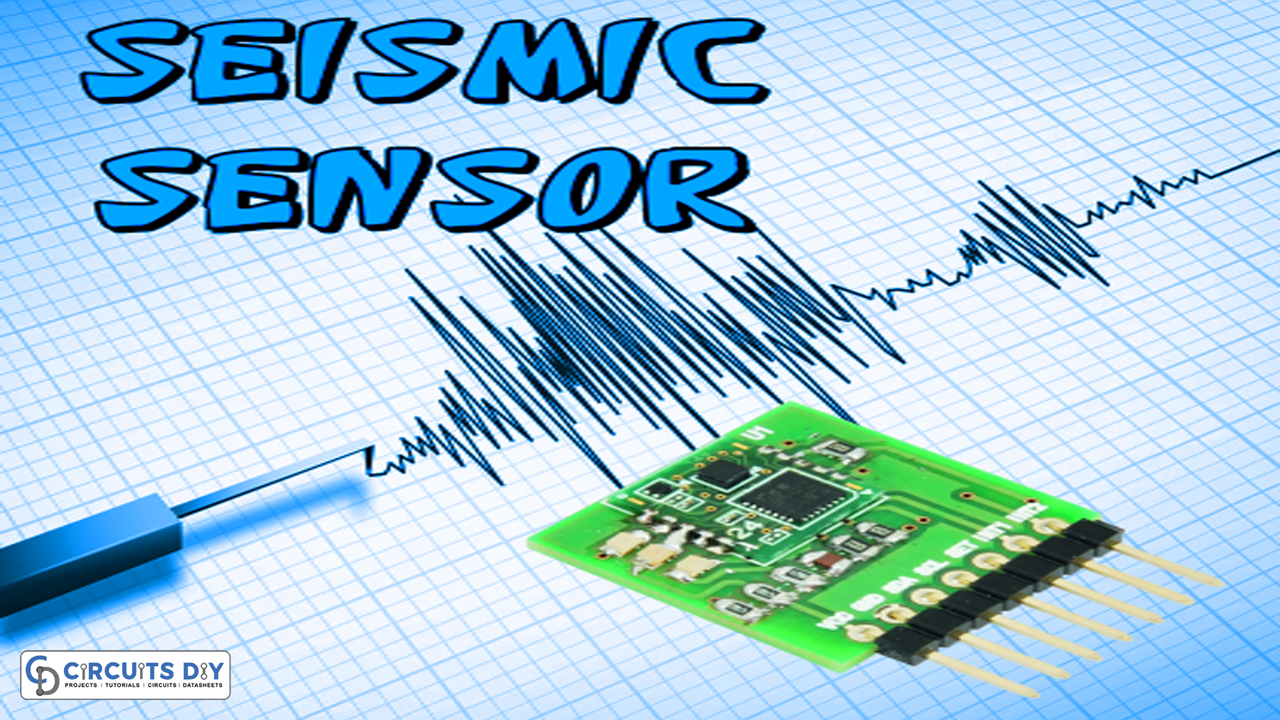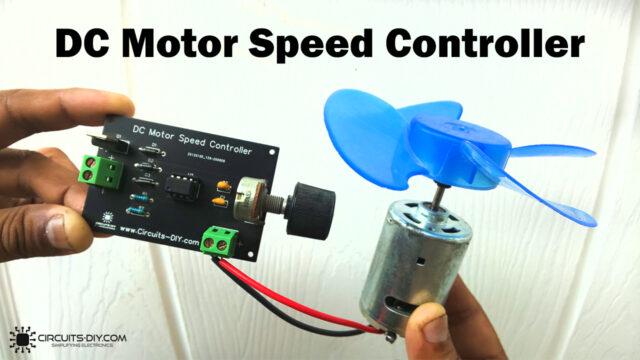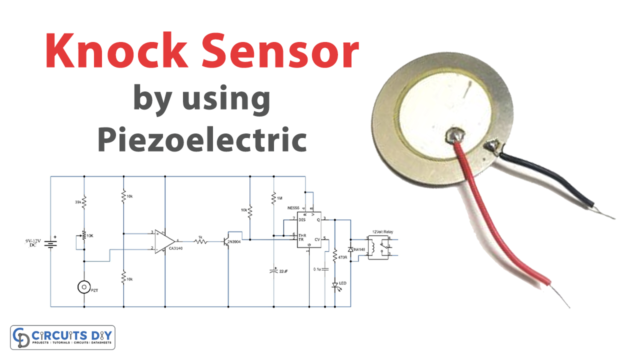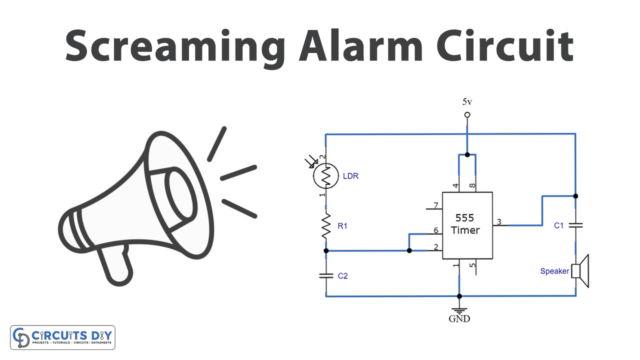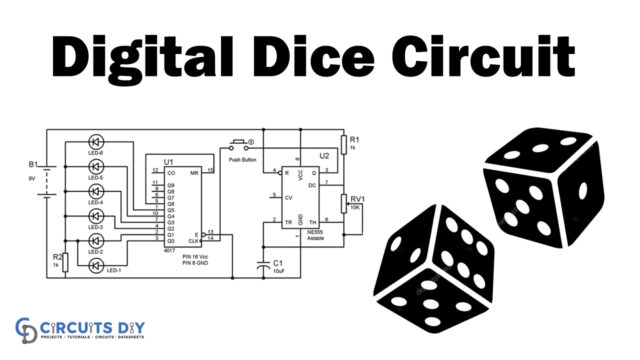Today we are going to demonstrate a project on a “multidirectional seismic sensor” circuit. A “seismic sensor” is a device used to measure ground movement when it is shaken by an annoyance. The circuit is exceptionally sensitive and can identify seismic waves created by any means. “Seismic sensors” bring the distortions into the signals they measure, but professionally designed frameworks have deliberately described the “frequency changes”.
The project can likewise be utilized to identify the entry of an individual into the prohibited area. For that reason, the three “piezo sensors” ought to be set inside the floor in three directions. This is one of the easiest tutorials for making Seismic Sensors.

Hardware Components
The following components are required to make a Multidirectional Seismic Sensor Circuit
| S.no | Components | Value | Qty |
|---|---|---|---|
| 1. | IC | CA3140 | 1 |
| 2. | IC | NE555 timer | 1 |
| 3. | Resistor | 10M, 1M, 1K, 10K, 470Ω | 6, 2, 1, 1, 1 |
| 4. | Electrolyte Capacitor | 0.1µF, 100µF | 1, 1 |
| 5. | Transistor | 2N3904 | 2 |
| 6. | Speaker | 8Ω | 1 |
| 7. | Piezo Sensors | – | 3 |
| 8. | Melody Generator IC | UM66 | 1 |
| 9. | Zener Diode | 3V | 1 |
| 10. | DC Supply | 9V-12V | 1 |
CA3140 Pinout
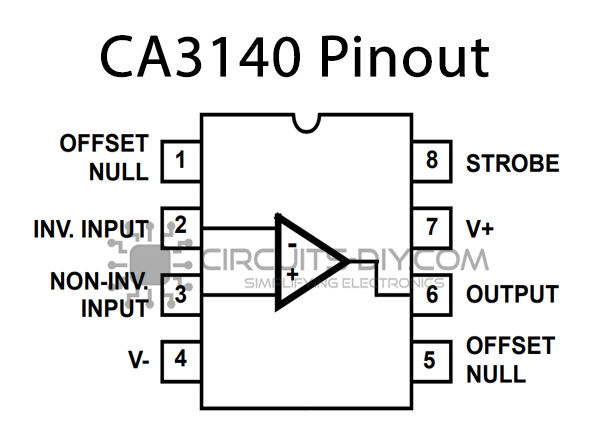
For a detailed description of pinout, dimension features, and specifications download the datasheet of CA3140
555 IC Pinout

For a detailed description of pinout, dimension features, and specifications download the datasheet of 555 Timer
Multidirectional Seismic Sensor Circuit
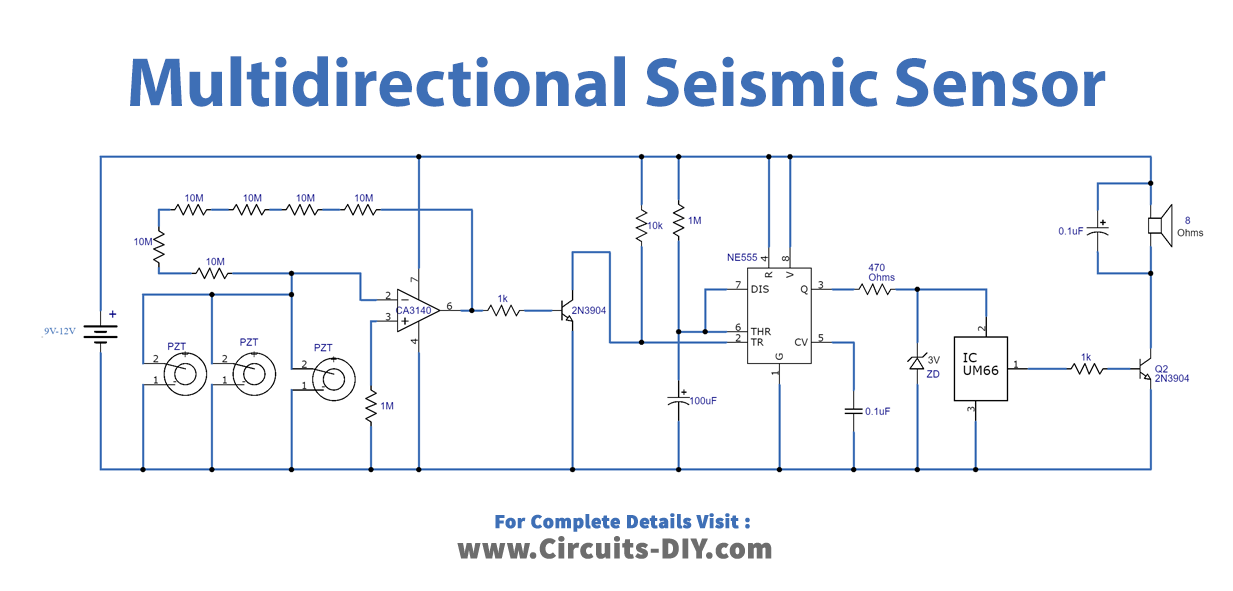
Working Explanation
The circuit is easy to make and uses a few segments. The three “piezo sensors” identify or sense the “seismic waves” that are intensified by the CA3140 operational amplifier IC, a 2N3904 transistor associated with the output of CA3140 IC triggers the 555 timer IC for a present period that relies upon the 100uF capacitor. At this point, its output goes high when the 555 timer IC is set off and actuates the UM66 alarm circuit. We are using a “Zener diode” of 3V to allow current flow backward when a reverse voltage, called “Zener Voltage” is reached. The project can be worked with any voltage from 9V to 12V DC.
Applications and Uses
A seismometer is an instrument that reacts to ground movements, for example, caused by
- Earthquakes
- Volcanic emissions and different sources produce “enormous” or “tiny” seismic waves.

